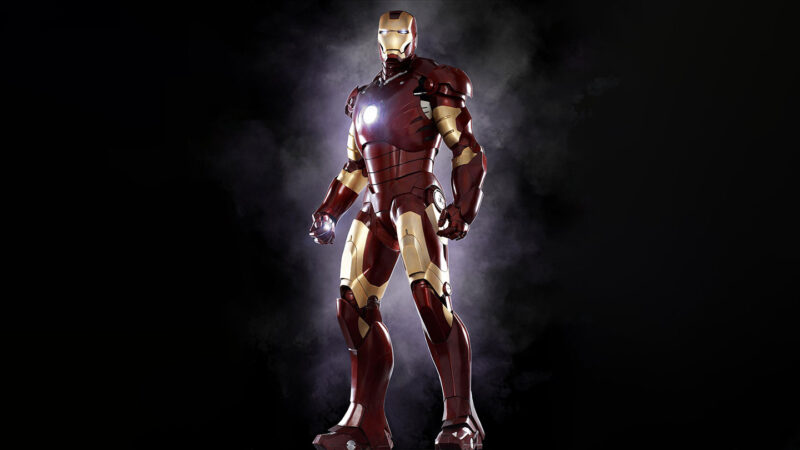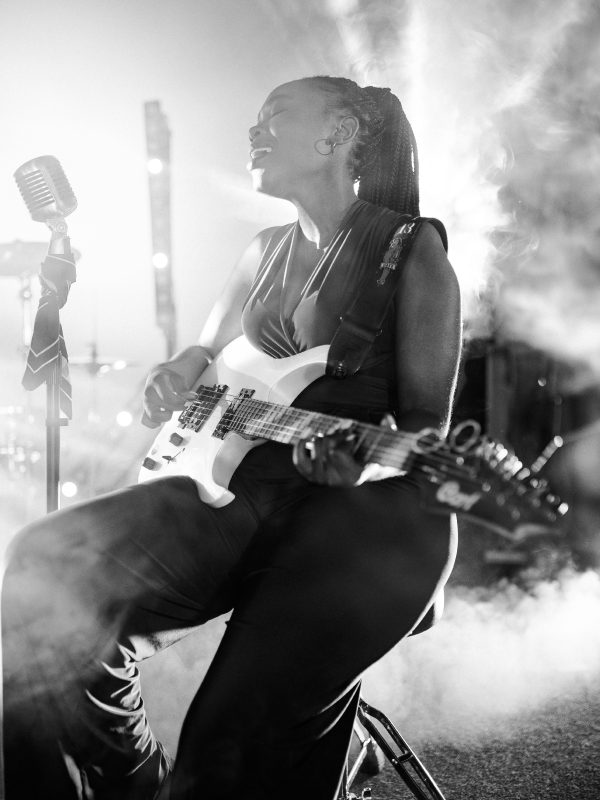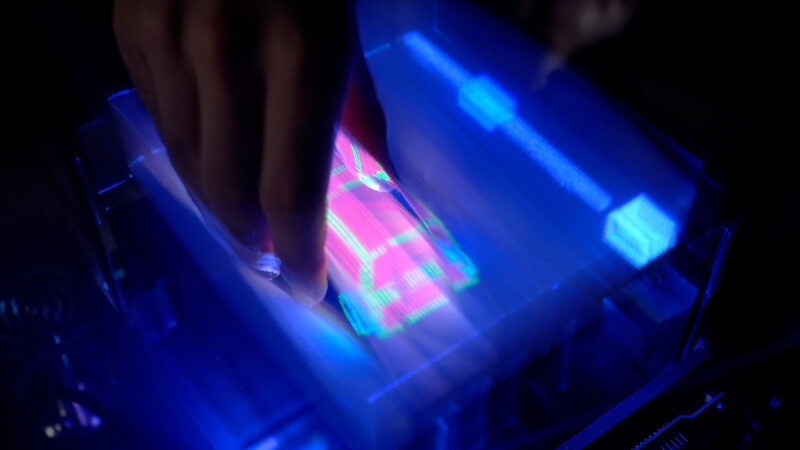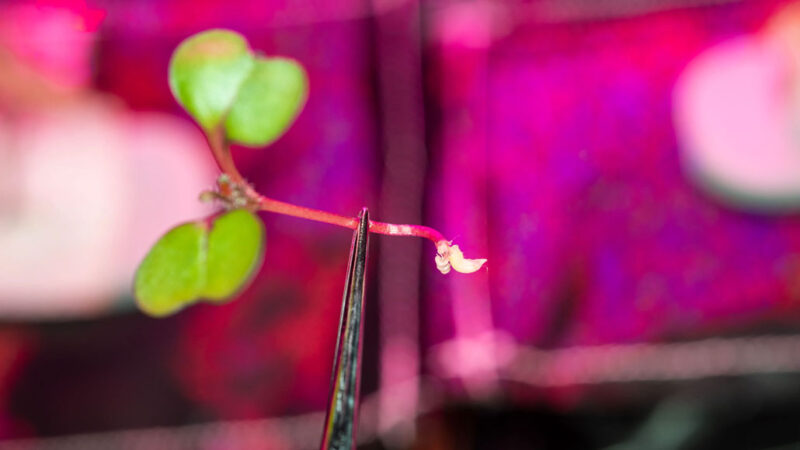Inventor Tony Stark has just been alerted to a crime spree sweeping the streets of New York City. He steps into his lab, where robotic arms begin placing pieces of armor all over his body. He soon emerges in his iconic red-and-gold power suit as Iron Man. Suited up, he can fly toward danger, punch with superhuman strength and blast lasers.
The Iron Man suit is an example of an exoskeleton. That is, a wearable device that helps someone move around and accomplish tasks. Engineers aren’t likely to re-create Iron Man’s armor in real life — both due to tech limitations and because the suit is, in some ways, impractical. But other exoskeletons do exist. They help people stay safe at work and do everyday tasks. Someday, similar wearable robots might even help astronauts walk the moon.
More like Titanium Man
Iron Man’s armor may look sleek on screen, but in the real world, it would likely be power-hungry and clunky.
In the movies, Iron Man’s suit runs on power from the arc reactor attached to his chest. This ring-shaped power source is said to produce 3 gigawatts. The movies claim this is enough to power a human heart for 50 lifetimes.
No palm-sized power source like the arc reactor exists. Instead, a real Iron Man suit would probably have to use batteries, says Erik Ballesteros. He’s an aerospace engineer at the Massachusetts Institute of Technology in Cambridge.
Keeping the suit’s battery small would be key, Ballesteros says. “The larger the battery, the heavier the suit,” and the slower it would move. Plus, larger batteries are more dangerous. Take the big, energy-dense lithium polymer batteries used to power robots and drones, Ballesteros says. They’re especially prone to breaking down and exploding.
Exoskeletons aren’t just for superheroes. Engineers are working on wearable devices that may one day help hikers trek long distances without injuring their knees. These “robotic boots” use motors to give walkers an extra speed boost.
Researchers have been working to improve wireless charging tech, Ballesteros says. This might allow a Stark suit to run on a fairly small battery that needs to be recharged after each outing. But that would limit how far the armor could fly on any given mission.
Battery life wouldn’t be the only thing limiting Iron Man’s movement. In the movies, Stark’s full-body shield protects him against punches and falls from tall heights. But such head-to-toe metal casing would be heavy and hard to move around in.
More lightweight metals than iron, such as titanium, might protect against enemy blows and impacts. Adding steel alloys could help lighten the weight of the suit.
Still, a superhero “can’t have everything be purely metal,” says Ballesteros. Unlike clothes, a stiff metal suit wouldn’t stretch or conform to movement. That would hinder a hero’s agility. Plus, it wouldn’t be too comfortable. Humans “are very soft,” says Ballesteros. “We’re very sensitive. We’ve got nerves all over our skin.”
Armor built with special kinds of metals could help Iron Man move better. These might look like metal fabrics, says Ballesteros. Or shape-memory alloys. These metals change shape when exposed to zaps of electricity. By molding to the shape of a wearer’s body, these alloys could move with their joints for increased flexibility.
It might seem like making Iron Man’s suit out of more flexible materials would offer less protection against hard impacts. But rigid armor wouldn’t offer much protection at all.
“You see Iron Man slam into things at hundreds of miles an hour,” says engineer Steve Collins. Iron Man walks away from such accidents unscratched. This is unrealistic. During those impacts, Stark’s suit comes to a complete stop. But his body would continue moving forward inside the suit, thanks to inertia, Collins explains. “These guys would get smooshed if they actually slammed into buildings like that.”
One day, wearable robots may help astronauts recover from falls on Moon. Learn more about how this new tech works with engineer Erik Ballesteros.
Exoskeletons get real
A real-world version of Stark’s famous suit may not be possible — or even desirable. But engineers have built other exoskeletons in all kinds of shapes. Unlike Iron Man’s suit, real exoskeletons often support specific vulnerable body parts, says Collins. At Stanford University in California, Collins designs devices that help people walk.
Most exoskeletons use rigid materials to provide support and stability, says Collins. “Kind of like your bones, but on the outside of your body.” These hard parts meet at joints that allow the wearable devices to move.
Manufacturing and warehouse workers have begun using simple exoskeletons that attach to the arms, shoulders and waist to do their jobs. Take people who assemble airplanes. These workers spend lots of time with their hands over their heads. “They might have to hold a heavy thing in place while they fasten it,” says Collins. “It’s really hard on people’s shoulders, doing that all day.”
An exoskeleton’s rigid parts help provide the support needed to lift heavy tools or materials. Meanwhile, the device’s moveable joints allow workers to hold positions needed to drill, sand or seal. Many exoskeletons do this without any powered parts, says Collins. They rely on springs or shock-absorbing components called dampers to control movements and offset weight.
“Even a device that doesn’t have any motors or batteries can still [offer] a person big benefits,” says Collins.
Researchers are now working to create wearable devices that help with an even wider variety of jobs. Say, space exploration.
During the Apollo missions, NASA’s astronauts struggled to recover from falls. The problem was that many used too much force to push themselves upright, says Ballesteros. In the moon’s weaker gravity, they pushed themselves off balance. Their stiff spacesuits and heavy gear only made it harder to get up.
Ballesteros and his team built a prototype of a wearable robot that might one day help astronauts recover from tumbles. Nicknamed “SuperLimbs,” the device will use extra arms to supply the needed force to lift a fallen astronaut up.
Others are looking at how wearable devices might help people closer to home.
“Before these devices [help] superheroes battle villains, they’ll probably first help people who just have difficulty performing activities of daily life,” says Collins. That could be older people facing mobility issues or even hikers looking to go further without damaging their knees.
Collins’ own team has designed a “robotic boot” that works with calf muscles to give walkers extra speed. A motor offers a boost right before a person’s toes lift off the ground during a step. Machine learning models help personalize how much of a leg up to give each user. Compared with normal shoes, the boots helped people walk about 10 percent faster and use 20 percent less energy.
Those who could benefit the most from exoskeletons include people with cerebral palsy or other conditions that make movement difficult, says Collins. Such tech isn’t widely available yet. But meeting this need is far more pressing than making a real-life Iron Man suit, says Collins. With an exoskeleton, “you don’t have to be going faster than a fighter jet. You can just be walking [at] a normal pace comfortably. And that’s a win.”

















